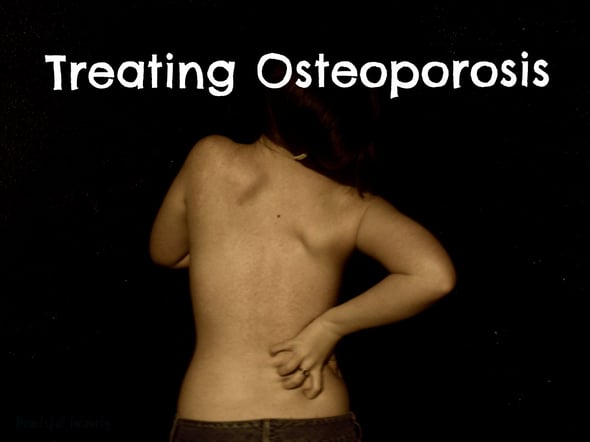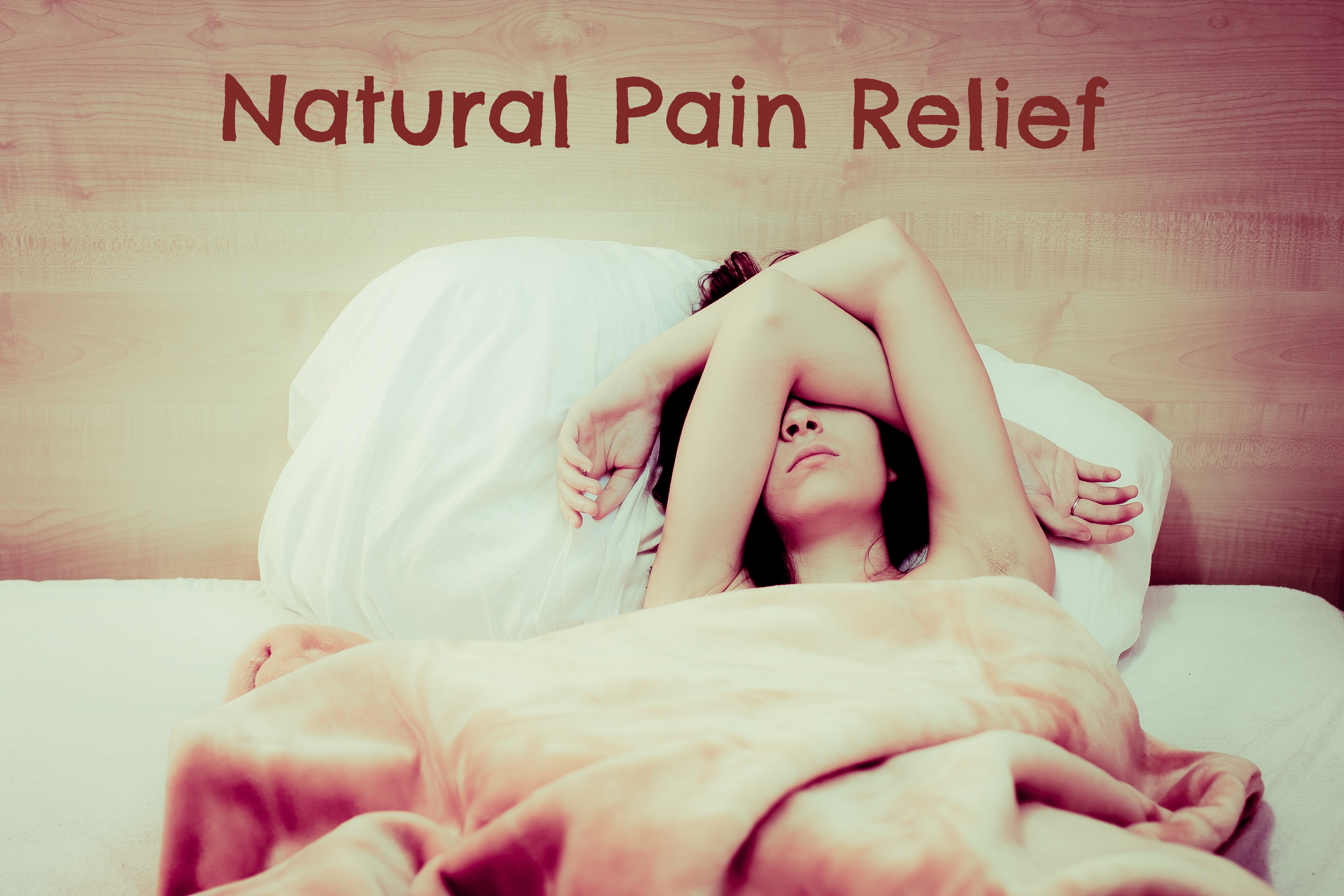
MRSA: Natural Methods for Prevention
By Gene Bruno, MS, MHS
Whether you call it "staph", "staph A" or “MRSA” (pronounces mersa), it’s all the same:...

In the last 20 years Americans have been consuming more milk and taking more calcium supplements than ever before, yet the rates of the bone crippling disease osteoporosis is rising. More than 10 millions women are diagnosed with osteoporosis. And another 34 million is believed to have “pre-osteoporosis” (osteopenia). Osteoporosis is disease progressive in nature where the bones become weaker and weaker, which makes the individual afflicted with the disease extremely susceptible to bone, fractures and changes in their posture. As derived from Latin, osteoporosis literally means “porous bones” (Balch, 2006, p. 605).
The primary system affected in Osteoporosis is the skeletal system. Because of the acquired imbalance between bone resorption and the process of bone formation the result is enhanced bone fragility, an increase in fracture risk, and reduced bone mass (Rakel, 2007, p. 417).
Osteoporosis affects many more women than men because of the hormonal, physiological, and nutritional differences between males and females. With that said, men may also suffer from bone loss as a side effect of certain medications, such as chemotherapy drugs, corticosteroids, anticonvulsants, thyroid hormone, or because of other illnesses (Balch, 2006, p. 605). Although both women and men of all ethnic backgrounds may develop osteoporosis, some of the risk factors for the disease include those who are: physically inactive, a diet low in calcium, small in body size, older adults, post menopausal women, Caucasian individuals, and females (“Calcium and bone health,” 2008). Additional risk factors for osteoporotic fractures are vitamin D insufficiency, a family history of an osteoporotic fracture in a first-degree relative, a recent loss of eleven pounds or more of weight, weight below 125.4 lbs, smoking, advanced age, and most importantly a previous fragility fracture also including silent vertebral fractures (Rakel, 2007, p. 417).
Because osteoporosis is a condition of low bone density that will progress silently over a long period of time it often remains undiagnosed until a fracture occurs. In order to diagnose osteoporosis or predict a possible fracture, physicians might take several steps that could include: an initial exam, x-rays that detect skeletal problems, laboratory tests that show the metabolic process of bone formation and breakdown, and a bone density test. Risk factors, family history of disease, medical history, intake of calcium and vitamin D, and exercise pattern are also noted (“Osteoporosis,” 2009).
Conventional medicine primarily offers medication, hormone therapy, and physical therapy as treatment options. Of the pharmaceuticals recommended for the treatment of osteoporosis, Bisphosphonates, Raloxfene (Evista), Calcitonin, and Teriparatide (Forteo) are most commonly prescribed. These drugs vary in function, but generally act to inhibit bone breakdown, mimic the beneficial effects of estrogen on bone density, reduce bone resorption, slow bone loss, and stimulate new bone growth. When started soon after menopause, hormone therapy can help maintain bone density. Physical therapy programs are recommended because of possible improved posture, balance and muscle strength, build bone strength, and decrease the frequency of falls (“Osteoporosis: treatment and drugs,” 2009).
More recently the “discovery of receptor activator of nuclear factor-kappaB ligand (RANKL) as a pivotal regulator of osteoclast activity provides a new therapeutic target” (McClung, 2007). The highly specific RANKL antibody denosumab is suspected to rapidly and substantially reduce bone resorption (McClung, 2007). Dosing with the antibody at an interval of 6 months appears to be a promising new treatment for osteoporosis and related disorders, although more research and studies are needed to determine its effectiveness, safety and tolerability. (McClung, 2007).
Botanicals and herb recommendations for Osteoporosis include feverfew for pain relief and as an anti-inflammatory. To help build strong bones use black cohosh, alfalfa, barley grass, yucca, rose hips, poke root, parsley, nettle, dandelion root, and boneset. Both oat straw and horsetail contain silica, which helps the body absorb calcium. Red clover isoflavones may mimic the effects of estrogen, which slows the degenerative breakdown of bone mass. Rosemary, thyme, and sage can inhibit bone breakdown (Balch, 2006, p. 608). Also, horse chestnut and comfrey both act as an anti-inflammatory that soothes fractures (Smith, 2003, pp. 29 & 42).
Calcium, the body’s most common mineral, must be maintained within a very narrow concentration range to ensure normal physiological function (Higdon, 2003). The amount of calcium in the blood is carefully regulated by the parathyroid and its hormone. When low blood levels of calcium are detected, the parathyroid hormone is released and triggers the conversion of Vitamin D to its active form calcitriol. Calcitriol increases the reabsorption of calcium in the small intestines. This tightly controlled system carefully manages serum calcium levels yet at the expense of the skeleton (Higdon, 2003). While calcium deficiency is rarely caused by low dietary intake, inadequate consumption may lead to accelerated bone loss. Supplemental calcium alone cannot usually restore lost bone in individuals with osteoporosis. However, optimal treatment of osteoporosis with any drug therapy also requires adequate intake of calcium (1,200 mg/day) and vitamin D (600 IU/day) (Higdon, 2003). Calcium Supplements come in different preparations and include calcium carbonate, calcium lactate, calcium gluconate, calcium citrate and calcium citrate malate. It is advised to take no more than 500 mg. at a time and with meals, except calcium citrate and calcium citrate malate which can be taken at any time (Higdon, 2003).
Vitamin D and its ability to optimize calcium absorption make it an important contributing factor in osteoporosis. There is no other vitamin that requires more whole-body participation than the fat soluble vitamin D. The kidneys, skin, liver, and bloodstream all contribute to the formation of fully active vitamin D (Haas & Levin, 2006, p. 98). There are several body systems (integumentary, immune, and cardiovascular) involved with the synthesis of vitamin D it is important to assess if all of those systems are functioning properly. Medically, the correlation between vitamin D deficiency and osteoporosis is widely known (“Osteoporosis,” 2009, “Calcium and bone health,” 2008, “Osteoporosis: treatment and drugs,” 2009) and supplementation is a vastly accepted form of treatment. Serum 25-OH vitamin D is an excellent test for accessing vitamin D insufficiency (Rakel, 2007, p. 420). Although more than 50% of women who are already being treated for osteoporosis are vitamin D deficient (Rakel, 2007, p. 420), it is important to assess by testing because of the chances of vitamin D toxicity. Vitamin D toxicity can occur if large amounts are consumed (Haas & Levin, 2006, p. 98). There are different opinions in the nutrition community as to doses and optimal levels of vitamin D. Reference levels range from 32-100 ng/mL for 25-OH vitamin D. The Vitamin D Council recommends a minimum of 50 ng/mL, with optimal levels falling between 50-80 ng/mL. The body’s preferred form of Vitamin D is cholecalciferol (D3).Taking Vitamin D3 supplements in 5,000 to 10,000 IU’s per day is suitable until reaching optimal levels. Then supplementing with 2,000 - 5,000 IU’s per day as a maintenance dose for most individuals will suffice (Vitamin D Council).
Consume foods high in vitamin D and calcium including: wheat germ, turnip greens, tofu, tahini, soybeans, shrimp, broccoli, chestnuts, clams, dandelion greens, flounder, sesame seeds, sea vegetables, sardines, salmon, dark green leafy vegetables, flounder, hazelnuts, kale, kelp, molasses, oats, and oysters (Balch, 2006, p. 608).
Consume calcium foods and whole grains at different times because whole grains contain a phytic acid that will bind with the calcium and prevent its absorption (Balch, 2006, p. 608).
Fermented soy foods and products as well as foods rich in omega-3 fatty acids should be included in the diet (Rakel, 2007, p. 425).
Consumption of animal protein foods should be reduced to below 60 gm a day (Rakel, 2007, p. 425).
Phosphate-containing drinks such as soft drinks and alcohol should be avoided (Balch, 2006, p. 608).
Yeast products should be avoided because yeast is high in phosphorus, which competes with calcium for absorption (Balch, 2006, p. 608).
Other foods that may inhibit calcium intake: sugar, salt, citrus fruits, and tomatoes (Balch, 2006, p. 608).
Other nutritional supplements to consider: Vitamin K1 and Vitamin K2, Vitamin C (Rakel, 2007, p. 425), Boron, Copper, Magnesium, Phosphorus, Silica, Zinc, Kelp, and Manganese (Balch, 2006, p. 608).
Exercise regularly because a lack of exercise may result in calcium loss. Walking is the best form for maintaining bone mass (Balch, 2006, p. 608).
Dance, Yoga, or Tai Chi enhance postural balance (Rakel, 2007, p. 425).
Alcohol, caffeine, and many drugs have a detrimental effect on calcium absorption (Balch, 2006, p. 606).
Stress management is recommended for several reasons, including: stress can induce physiological changes that lead to osteoporosis, stress creates behavioral distortion of sleep, exercise, drinking, and eating habits that lead to osteoporosis, stress states direct increase inflammation-induced cytokines that may lead to chronic infection, and stress induced malnutrition is related to the development of osteoporosis as well as the decrease in bone formation (Kumano, 2005, p. 1544).
Managing osteoporosis requires regular monitoring and follow-up to ensure treatment is working effectively. Adjustments to the plan should be made as necessary. Most doctors recommend bone density testing (DEXA bone scans) every 1-2 years for those diagnosed with osteoporosis or at risk of developing osteoporosis.
The conventional medicine approach to treatment, hormone replacement therapy, has many risks associated with it despite the benefits of estrogen on bone density. Some of these risks include: increased risk of heart disease, breast cancer, endometrial cancer, and blood clots (MayoClinic.com). The underlying problem with any form of pharmaceutical intervention is that those forms of treatment seek to remedy the symptom rather than the cause. There are, in fact, three types of osteoporosis, which are defined by the cause of the affliction. Type 1 is caused by hormonal changes, type 2 is related to dietary insufficiency, and type 3 is caused by drug treatments for other diseases unrelated to osteoporosis (Balch, 2006, p. 606). A symptom-based form of treatment without proper determinants of the cause of the affliction could lead to unnecessary side effects, for example the risks associated with hormone replacement therapy. A whole-person approach to treatment seems to be especially necessary when treating osteoporosis because generalized treatment that is not tailored to the individual could have serious consequences.
Balch, P. (2006). Prescription for nutritional healing. New York: Penguin Group. Higdon, J. (2003). Calcium. Retrieved from http://lpi.oregonstate.edu/ infocenter/minerals/calcium/ . Calcium and bone health. (2008, December 3). Retrieved from http:// www.cdc.gov/nutrition/everyone/basics/vitamins/calcium.html . Haas, E. M. , & Levin, B. (2006). Staying healthy with nutrition. New York: Random House . Kumano, H. (2005). Osteoporosis and stress. Clinical Calcium, 15(9), 1544-1547 . McClung, M. Role of RANKL Inhibition in Osteoporosis. Arthritis Re Ther, 2007;9 Suppl 1:S3. Retrieved from http://www.ncbi.nlm.nih.gov/pubmed/ 17634142. Osteoporosis. (2009, May). Retrieved from http://www.niams.nih.gov/ health_info/Bone/Osteoporosis . Osteoporosis: treatments and drugs. (2009, December 12). Retrieved from http://www.mayoclinic.com/health/osteoporosis/DS00128/ DSECTION=treatments-and-drugs . Rakel, D. (2007). Integrative medicine. Philadelphia: Saunders Elsevier. Smith, E. (2003). Therapeutic herb manuel. Williams: Ed Smith. Vitamin D Council. Retrieved from http://www.vitamindcouncil.org/

By Gene Bruno, MS, MHS
Whether you call it "staph", "staph A" or “MRSA” (pronounces mersa), it’s all the same:...

Herbal COX-2 Inhibitors
By Gene Bruno, MS, MHS – Dean of Academics, Huntington College of Health Sciences
On September 30, 2004, the pharmaceutical giant Merck & Co.,...